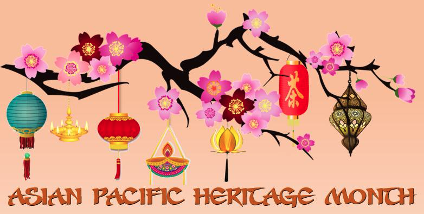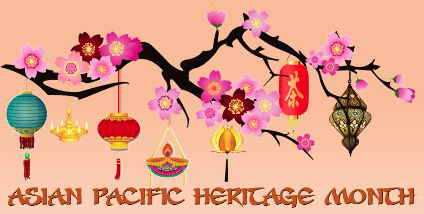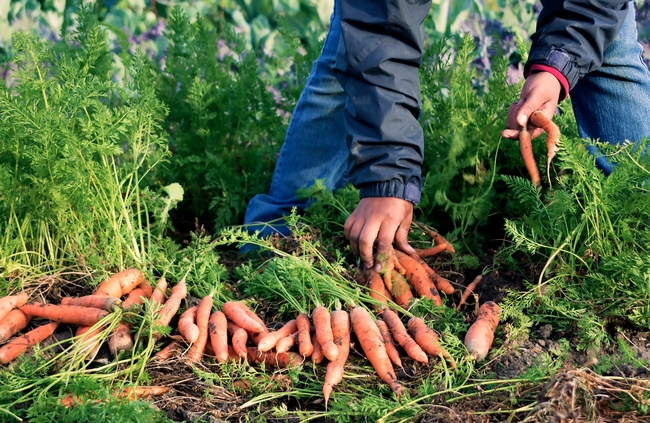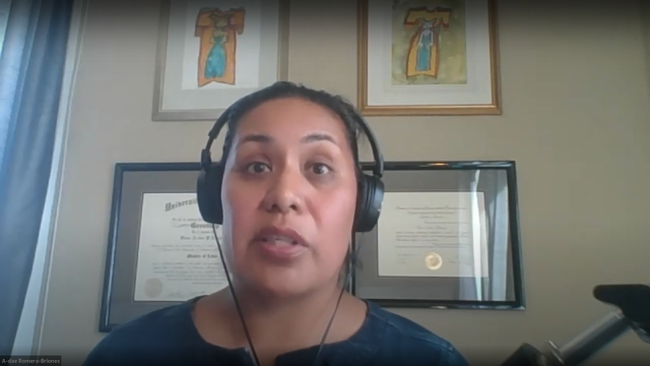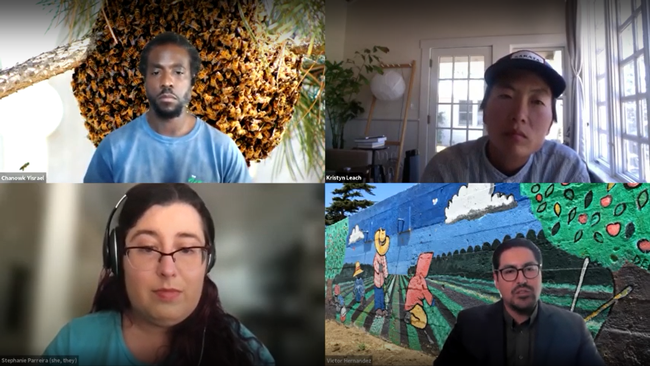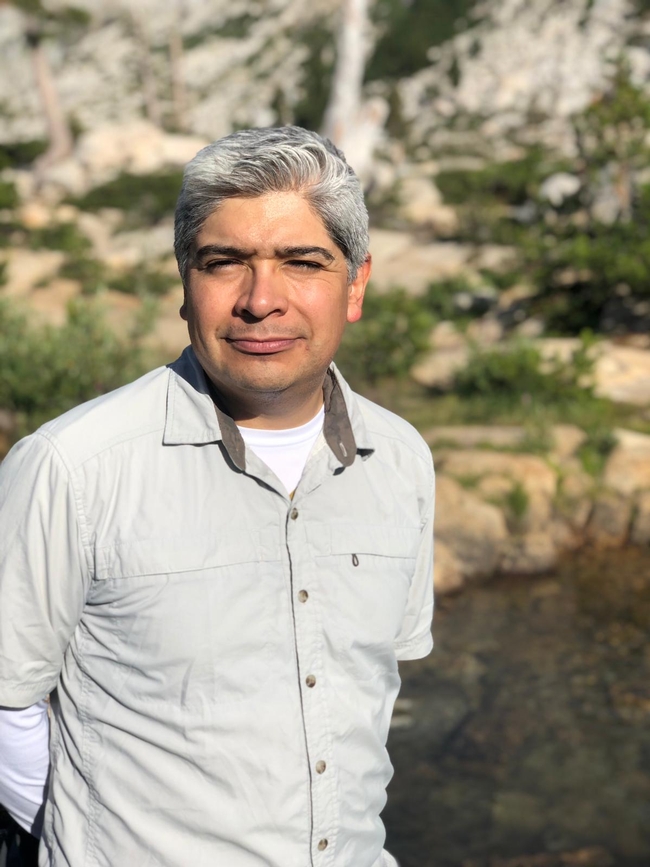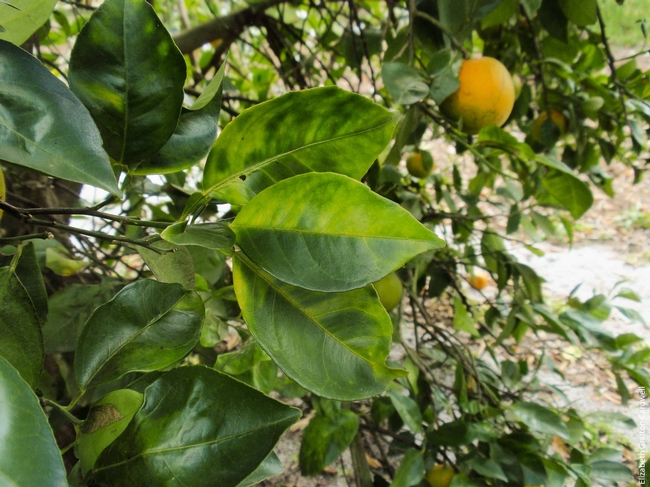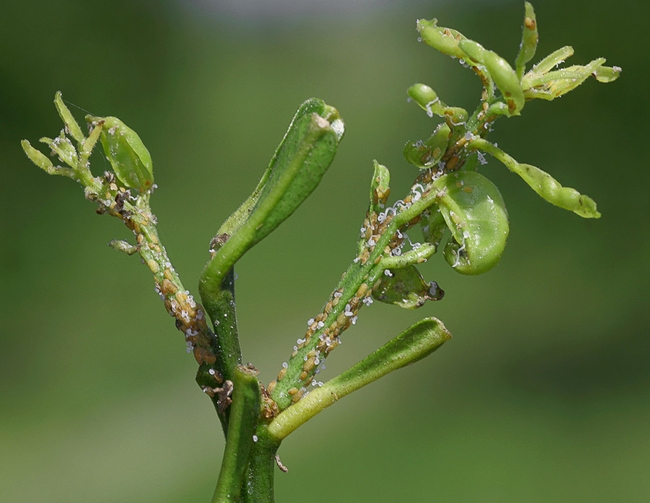Posts Tagged: Asian
Asian Pacific American Heritage presentations posted online
UC ANR celebrated Asian Pacific American Heritage Month in May with virtual discussions of Asian Americans in agriculture. To view recordings of the webinars, visit the Learning and Development diversity website.
On May 25, Kristyn Leach, a Korean American farmer in Yolo County, shared her personal story of activism for food and environmental justice, as well as her passion for nurturing connections between Asian American communities and the unique crops and foodways that are deeply rooted in their heritage.
Leach also discussed Second Generation Seeds, a collective of Asian American growers dedicated to offering heirloom seeds and resources that help communities of the Asian diaspora reclaim and revitalize their diverse food cultures.
On May 31, UC Cooperative Extension small farms advisors Ruth Dahlquist-Willard, Margaret Lloyd, Aparna Gazula and Hung Doan discussed how they help Asian American small farmers overcome language barriers.
The small farms team serving Asian American farmers includes:
- Margaret Lloyd, Pang Kue and Fam Fin Lee, Capitol Corridor
- Vong Moua, Stanislaus County
- Ruth Dahlquist-Willard, Michael Yang and Lilian Thaoxaochay, Fresno County
- Aparna Gazula, Xuewen Feng and Qi Zhou, Santa Clara County
- Hung Doan, Riverside County
They serve Hmong, Mien, Chinese and Korean American farmers in California. When the pandemic struck, the small farms team helped Asian American farmers quickly comply with COVID-19 policies and adapt to new market conditions.
They are currently assisting Asian American farmers to adapt to climate change, access grants and other resources, and identify more ways to remain competitive and sustainable. The researchers also educate policymakers about issues affecting Asian American farmers to shape policy that is more practical.
Asian Pacific American Heritage Month presentations online
During Asian Pacific American Heritage Month in May, UC ANR colleagues gathered via Zoom for virtual events to learn, share, support and celebrate. The presentations were recorded and will be posted under DEI on the Learning and Development recording archive page https://ucanr.edu/sites/Professional_Development/Monthly_WebANRs/Webinar_Archive under "Asian Pacific Islander Month."
"Stories in Seeds: Asian American Identity as rooted in heirloom crops"
Kristyn Leach, Namu Farms and Second Generation Seeds
May 25, 2022
Kristyn Leach, a Korean American farmer in Yolo County, will share her personal story of activism for food and environmental justice, as well as her passion for nurturing connections between Asian American communities and the unique crops and foodways that are deeply rooted in their heritage. In addition to growing Korean and East Asian produce using traditional methods, Kristyn is active with Second Generation Seeds, a collective of Asian American growers dedicated to offering heirloom seeds and resources that help communities of the Asian diaspora reclaim and revitalize their diverse food cultures. Recording on YouTube: https://youtu.be/WKbyeiVPJL0.
UCCE helps Asian American small farmers overcome language barriers
UC Cooperative Extension small farms advisors Ruth Dahlquist-Willard, Margaret Lloyd, Aparna Gazula and Hung Doan
May 31, 2022
Meet the UCCE team that serves Hmong, Mien, Chinese, Korean and other Asian American farmers in California. Farming is a complex business made even harder when English is not your native language. When the pandemic struck, UC Cooperative Extension helped Asian American farmers quickly comply with COVID-19 policies and adapt to new market conditions. The small farms team members are currently assisting Asian American farmers to adapt to climate change, access grants and other resources, and identify more ways to remain competitive and sustainable. The researchers also educate policymakers about issues affecting Asian American farmers to shape policy that is more practical.
Small farms team serving Asian American farmers:
- Margaret Lloyd, Pang Kue and Fam Fin Lee, Capitol Corridor
- Vong Moua, Stanislaus, Merced and San Joaquin counties
- Ruth Dahlquist-Willard, Michael Yang and Lilian Thaoxaochay, Fresno County
- Aparna Gazula, Xuewen Feng and Qi Zhou, Santa Clara County
- Hung Doan, Riverside County
Asian Pacific American Heritage Month: 'Stories in Seeds' presentation May 25
In commemoration of Asian Pacific American Heritage Month in May, you are invited to attend a special virtual presentation, "Stories in Seeds: Asian American Identity as Rooted in Heirloom Crops," by Kristyn Leach of Namu Farms and Second Generation Seeds.
The link to the online talk on May 25, 2022 (12:30 to 1:30 p.m.) can be found below.
Kristyn, a Korean American farmer in Yolo County, will share her personal story of activism for food and environmental justice, as well as her passion for nurturing connections between Asian American communities and the unique crops and foodways that are deeply rooted in their heritage.
In addition to growing Korean and East Asian produce using traditional methods, Kristyn is active with Second Generation Seeds, a collective of Asian American growers dedicated to offering heirloom seeds and resources that help communities of the Asian diaspora reclaim and revitalize their diverse food cultures.
Zoom Meeting: https://ucanr.zoom.us/j/91740502032?pwd=dENZY1pkMXFpOVd4RmZ5a3I5djJCUT09
Meeting ID: 917 4050 2032 | Passcode: 007206 | +1 (669) - 900 - 6833
Farmers of color share their contributions, concerns in UC SAREP webinar series
When agricultural advisors came to the Cochiti Pueblo in New Mexico during the 1940s, they lined the irrigation ditches with concrete, in the name of boosting efficiency and productivity. But in single-mindedly focusing on water delivery, they neglected to consider how the previously inefficient seepage sustained nearby fruit trees.
Their actions, as well-intentioned as they might have been, disrupted the local ecosystem and killed the trees that had fed many generations, according to A-dae Romero-Briones, who identifies as Cochiti and as a member of the Kiowa Tribe.
“In my language, we call the extension agents ‘the people who kill the fruit trees,'” said Romero-Briones, director of the Food and Agriculture Program for the First Nations Development Institute, a nonprofit that serves Tribal communities across the mainland, Alaska and Hawaii.
The historically tense relationship between Indigenous peoples and government-affiliated programs is one of the many complex dynamics discussed in a six-part webinar series, “Racial Equity in Extension,” facilitated by UC Sustainable Agriculture Research and Education Program.
Making communities of color in the agricultural sector more visible is a priority for Victor Hernandez, a sociologist and outreach coordinator for the USDA's Natural Resources Conservation Service. Hernandez, who has organized “Growing Together” conferences for Latino and Black farmers, is trying to get more farmers of color to participate in the upcoming 2022 Agricultural Census.
“If we cannot quantify the demographic, we cannot justify the need,” emphasized Hernandez, explaining that his office uses the data to direct resources that advance equity in service, program delivery and distribution of funds.
A legacy of mistrust
At the same time, however, Hernandez also acknowledged the challenges in registering growers of color for the census, conducted by the USDA's National Agricultural Statistics Service. (According to Brodt, USDA's most recent agricultural census, dating to 2017, counts approximately 25,000 producers of color among 128,535 total producers in California.)
“Many of us that are considered socially disadvantaged or historically underserved…a lot of times our peoples come from [nations with] oppressive governments,” Hernandez said. “And so when you come to the United States and you begin to build your life here, to go and engage with the federal government is not the first knee-jerk reaction.”
On top of government mistrust and fears of deportation or detention, other immigrant groups have seen mainstream agriculture – borne by the “Green Revolution” wave across the globe – replace deep-rooted cultural practices, said Kristyn Leach of Namu Farm in Winters.
“It just makes these small farmers distrust our own knowledge, the knowledge that's existed for centuries – before the kind of current iteration of agriculture that we're situated within right now,” said Leach, who works to preserve the agricultural heritage of her Korean ancestors, and facilitates a farmers' collaborative called Second Generation that adapts Asian crop varieties to climate change.
According to Romero-Briones, a collective memory of supplanted culture also lingers in Indigenous communities. In the Cochiti Pueblo, “primarily a subsistence agriculture community” with a long history of corn cultivation, their practices are distinct from those in the mainstream – including regenerative and sustainable agriculture.
Building relationships takes commitment
Given that legacy of cultural displacement and appropriation, how do extension professionals and other agricultural advisors slowly rebuild trust with communities of color? For Romero-Briones, it begins with a genuine respect for Indigenous practices, and she urges interested people to contact their local tribal historic preservation officer to begin strengthening those connections and understanding – beyond a couple of phone calls.
“As someone who works with Indigenous people all day, even I need to recognize sometimes I have to meet with people up to 12 times before we actually start talking about the work that I initially wanted to talk to them about,” Romero-Briones said.
In a similar vein, Chanowk Yisrael, chief seed starter of Yisrael Family Farms, encouraged listeners to reach out to members of the California Farmer Justice Collaborative – an organization striving for a fair food system while challenging racism and centering farmers of color.
“To use a farm analogy: we've got this ground, which is the farmers of color who have been neglected for a long period of time,” said Yisrael, who has grown his farm in a historically Black neighborhood of Sacramento into a catalyst for social change. “It's not just going to be as simple as just throwing some seeds and things are going to come up; you're going to have to do more – that means you got to get out and do much more than you would do for any other community.”
Investing time in a community is one thing – and backing it up with tangible resources is another. Technical expertise is only the “tip of the iceberg,” Leach said, as historically marginalized groups are also seeking land access and tenure, more affordable cost of living, and access to capital.
“All of those things are actually much bigger burdens to bear for most communities of color than not having the knowledge of how to grow the crops that we want to grow, and not knowing how to be adaptive and nimble in the face of climate change," Leach explained, highlighting California FarmLink as an essential resource. (“Understanding Disparities in Farmland Ownership” is the next webinar in the SAREP series, set for Nov. 19.)
Bringing diverse voices to the table
Another key is ensuring that farmers and farm workers of color are represented in management and decision-making processes. Samuel Sandoval, a professor in the Department of Land, Air and Water Resources and UC Cooperative Extension specialist in water management, develops outreach programs in English and Spanish for everyone from farm workers to the “boss of the boss of the boss.”
“It has to be changed,” he said, “because at the end, the person who is going to operate the irrigation system and turn on or off the valves, the person who is looking if there's a leak or not – that's the person who's not being informed, or has not been informed on purpose.”
That exclusion of certain groups can lead to a loss of invaluable knowledge. Leach said there is a real danger in ignoring the wisdom of communities that have contributed so much to the foundation of food systems in California and around the globe.
“These really kind of amazing, sophisticated and elegant agroecological systems that we don't often legitimize through the scientific language and perspectives aren't seen as being really technically proficient – but, in many ways, they're more dynamic and more resilient than the things that we're perpetuating right now,” she said.
As a concrete example, Sandoval said that while extension advisors and specialists conduct studies to remedy a plant disease, farm workers might be developing – separately and in parallel – their own solutions by asking for advice from their social networks via WhatsApp, a phone application.
A reimagining of collaboration, Sandoval said, would include (and compensate) people working in the field for sharing their perspectives – bringing together academics and farmers, integrated pest management experts and pesticide applicators, irrigation specialists and those who do the irrigation.
A need to look within
Concerns about inclusion and validating alternate sources of knowledge apply also to the recruitment process in extension. Leach said that she has seen listings for advisor jobs that would require, at a minimum, a master's degree – which would automatically disqualify her, despite her extensive knowledge of Asian heirloom vegetables.
“When you look at a job description and you see ‘Asian crop specialist,' only required qualification is a master's degree, and then somewhere down the long list of sort of secondary desired, recommended things is some knowledge of Asian crops or communities…you know that just says a lot in terms of what has weight,” Leach explained.
Before organizations can authentically connect with communities of color, they should prioritize diversity in their own ranks, said Romero-Briones. First Nations Development Institute had to ensure that they had adequate representation across the many Tribes that they serve.
“Before we start looking out, we have to start looking in,” she explained, “and that means we have to hire Indigenous people who know these communities.”
For extension professionals and other members of the agricultural community in California, the UC SAREP webinar series has helped spark that introspection and a meaningful reevaluation of institutional processes and assumptions.
“These discussions have been tremendously illuminating and eye-opening,” Brodt said. “But hearing and learning is just the start – it's incumbent on us, as an organization and as individuals, to take action to ensure that farmers of color and their foodways are truly respected and valued.”
ANR has resources for protecting citrus from ACP and huanglongbing
The incurable citrus tree disease huanglongbing, or HLB, has been detected in Los Angeles and Orange counties and most recently in Riverside. The citrus disease is spread from tree to tree by Asian citrus psyllids, the insects that move the bacteria that cause huanglongbing.
Citrus trees infected with huanglongbing develop mottled leaves and produce fruit that is misshapen, stays green and tastes bitter. There is no known treatment for the disease, which usually kills the tree within three to five years, according to UC Cooperative Extension specialist Beth Grafton-Cardwell.
Huanglongbing, which is also known as citrus greening, has already devastated the citrus industries in Florida, Georgia, Louisiana, South Carolina and Texas.
You can help prevent this disease from destroying California's citrus as well as your own trees.
Look for yellowed leaves on citrus trees. Nutritional deficiencies can also cause citrus trees to have yellow leaves so it is important to know the difference. Nutrient deficiency causes a similar pattern of yellowing on both sides of the leaf. HLB causes blotchy yellow mottling and is not the same on both sides of the leaf.
To identify the Asian citrus psyllid and the disease symptoms of HLB, see the fact sheets, videos in English and Spanish and other resources at http://ucanr.edu/acp.
If you see any trees that display symptoms of huanglongbing, contact your local agriculture commissioner.
To learn about the latest research, visit UC ANR's new Science for Citrus Health website at http://ucanr.edu/sites/scienceforcitrushealth.
More resources on Asian citrus psyllids and huanglongbing:
- Asian citrus psyllid Science for Citrus Health http://ucanr.edu/sites/scienceforcitrushealth
- ACP/HLB Distribution and Management http://ucanr.edu/acp
- UC IPM Pest Note http://ipm.ucanr.edu/PMG/PESTNOTES/pn74155.html
- Newest Detection of Citrus Greening (HLB) is in Riverside //ucanr.edu/blogs/blogcore/postdetail.cfm?postnum=24776
- UC has boots on the ground in an unrelenting search for Asian citrus psyllid //ucanr.edu/blogs/blogcore/postdetail.cfm?postnum=24752
- Detecting Asian citrus psyllid video https://www.youtube.com/watch?v=QhQXL4bwnXI
- Check your citrus trees for Asian citrus psyllid video https://youtu.be/UhqwUQm0zpk.

